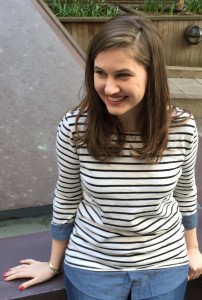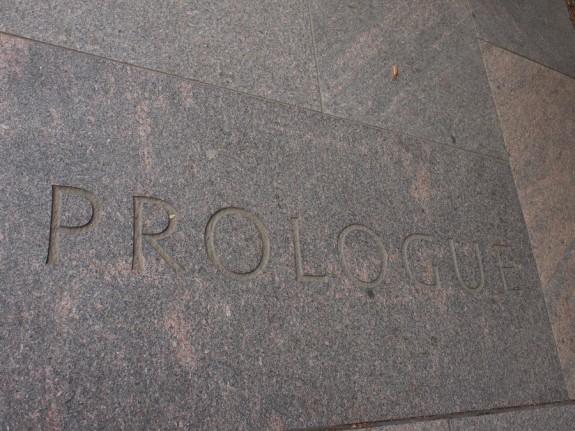For the first article in this series, click here.
After attending ThrillerFest, I decided to follow the advice of the pros and take a step back from my book. It was a tough call, and a scary one. I had spent so long with the characters and world, but I knew I needed clear head-space. I also knew I couldn’t stop writing. If there was one theme I heard reiterated at ThrillerFest from every writer, it was the necessity of simply writing. I thought this would clear my head, and it did. But also made me realize something — I stay a lot more sane, and my writing stays a lot more fresh, when I work on two projects at once. Here’s why:
Writing is One Thing
Stephen King said, “Write with the door closed. Edit with the door open.” Writing–especially a first draft–ought to be protected. A first draft is all possibility, trial and error (and error and error and error). When we write a story for the first time, even if we’ve planned it out, the act itself can take us wildly off-course. Sometimes, we need to let it. I was struck at ThrillerFest to learn that Michael Connelly never shows anyone his first 2-3 drafts. But the more I thought about it, the more it made sense. The imagination is a crucible; adding in new elements will change it.
For a first draft, you are the expert, anything is possible, and you cannot be wrong. At ThrillerFest, Catherine Coulter put it this way: “You do what’s right. You do what feels right. Do what you need to do. Do what your characters want to do.”
So, I didn’t let anything change it. I kept my first draft a secret between me and my characters and my world. It wasn’t easy. As writers, we all are well-acquainted with the horrible question: “So, what are you working on?” Instead of trying to impress people (an exercise that, inevitably, ended up deflating me), I fine-tuned a description down to one sentence; enough not to be rude, but giving only the barest traces of plot away. Anyone who asked knew I had a main character, a world and a conflict. And I left it at that.
Editing Is Another
Editing (or re-writing), is a different beast. You’re slowly preparing yourself and your story for the place you want it to be–in a stranger’s hands. And for this type of work, you are no longer the expert. You have to incorporate the lessons you’ve learned from better writers who’ve been here before; structure, character development, theme. In the editing stage, you’re inviting people in. Slowly. Maybe a few readers for a few pages. Then a few chapters. Then the whole book.
Then comes the painful process of balancing the opinions of others with your own, finding what’s true, what’s best, and where the book still needs work. Jodie Renner said, “If the book can live without it, you need to take it out.” At first, it might be like taking a hack-saw to your manuscript. But then it will be a knife. Then a chisel.
Some writers relish the creative first-draft stage. Others enjoy the fine-tuning of the editing process. But every writer needs to excel at both. At ThrillerFest, Jodie Renner said, “Every writer has to be an editor. If you cannot edit your own work, no one else will.”
We Need to Exercise Both
When I put aside my book, and started writing another, I realized how rusty I was at actually writing. I had thought it would be a relief to start something new, something fresh, to seize the freedom that comes of jumping back in my creative crucible, where I was the only expert.
Wrong. It was hard. But I should not have been surprised–I hadn’t exercised my writing muscles in five years. I’d been editing, not writing. I had scrapped scenes and re-written them, but always within a larger, complete framework.
There is a huge difference between working on one side of “Once Upon a Time” and working in-between “Once Upon a Time’ and “The End.” In the first scenario, you are the expert, you are alone, and you can do anything. In the second, you are not the expert, you are not alone, and there are many things you can’t do. In the first scenario, the door is closed. In the second, it’s open. I hadn’t worked with the door closed in five years.
Writing is not like riding a bike. I had to relearn how to do it. And you know what? It was awful. Those first hundred pages were a slog. I’ve never had to count words before. But I was struggling to get to 1,000 a day. I had to keep in mind what I’d seen at ThrillerFest–writer after writer after writer that simply said, “Write every day.”
And here’s where I had my epiphany.
I need to write and edit every day. And to do that, I need to have two projects going simultaneously.
The Two-Project Plan
Sound impossible? That’s what I thought, too. There aren’t enough hours in the day. There isn’t enough space in my head. There is not enough coffee in America to sustain that kind of undertaking. But then, there’s also not enough time for me to let my writing muscles get fat and lazy again. Or for me to take three months to stretch my editing muscles back to form.
Most published authors are writing and editing regularly. One book is with the publisher–getting edited, copy-edited and proofread. Authors will review and edit a book several times before it goes to print. And this will all be with the door wide open. But, most authors are also at work on something new, something that’s still between them and the blank page. At ThrillerFest, they were there to promote their books. So, they talked about them. But many were also cagey about what they were working on now. They kept it to themselves. It was still in the crucible.
So I’ve started editing my first draft, while writing another. I actually prefer editing to writing, so I write in the morning, when my mind is freshest, most open and creative. I edit at night, when I’m tired, because I know that editing is something I really enjoy. It’s a bit crazy, keeping two stories, two worlds, and two sets of characters in my head, but it’s worth it to keep my writing in top-form. Also, when I’m ready to query, I’ll have a second project that I’m equally invested in to keep me distracted. And I’ll never pin all my hopes on one draft again. It keeps me and my head where they need to be–at my desk, with my craft, not worrying about things I cannot control, and completely in charge of the things I can.
That’s not feasible for everyone. Some writers are consumed by one story, and can’t focus on another. Some writers don’t have time at night and the morning. There’s a million reasons that this won’t work for everyone exactly the same way. But here are a few other ways you can plan like a pro, and keep your writing and editing muscles in top form.
1) Start every writing session with a writing exercise.
By adding ten minutes of free writing to your writing routine, you know that you’re always going to keep your writing muscles in tip-top shape.
2) Write Short Stories
Many writers skip straight to books. That’s what I did. I wrote three books before I ever wrote a short story. But short stories are a great exercise because they give the experience of the entire writing process–drafting, editing, rewriting and polishing–in a quicker format. If you can’t do two books at once, try writing a short story set in your world, or about a secondary character while you’re editing. Many writers publish novellas and short stories as supplemental texts. You’ll have more material, and no first-draft slog on your next book.
3) Explore Other Short Forms
There are so many ways to tell a story. Poetry, scripts, vignettes. The possibilities are endless. By trying out new forms, you’re visiting the crucible every day. It’s an exercise that will make your writing muscles even stronger. And all without taking away from your primary project.
In Hamlet, Shakespeare writes, “Assume a virtue, if you have it not.” Here’s the truth–if the pros can do it, we can, too. And we probably should. So, if, like me, you’re not a pro yet, start acting like one. Soon enough, we’ll be pros, too.
 Bess Cozby writes epic stories in expansive worlds from her tiny apartment in New York City. By day, she’s an Editor at Tor Books, and Web Editor for DIY MFA. Her work is represented by Brooks Sherman of the Bent Agency. Tweet her at @besscozby, contact her at bess@diymfa.com, or visit her website at www.besscozby.com.
Bess Cozby writes epic stories in expansive worlds from her tiny apartment in New York City. By day, she’s an Editor at Tor Books, and Web Editor for DIY MFA. Her work is represented by Brooks Sherman of the Bent Agency. Tweet her at @besscozby, contact her at bess@diymfa.com, or visit her website at www.besscozby.com.







